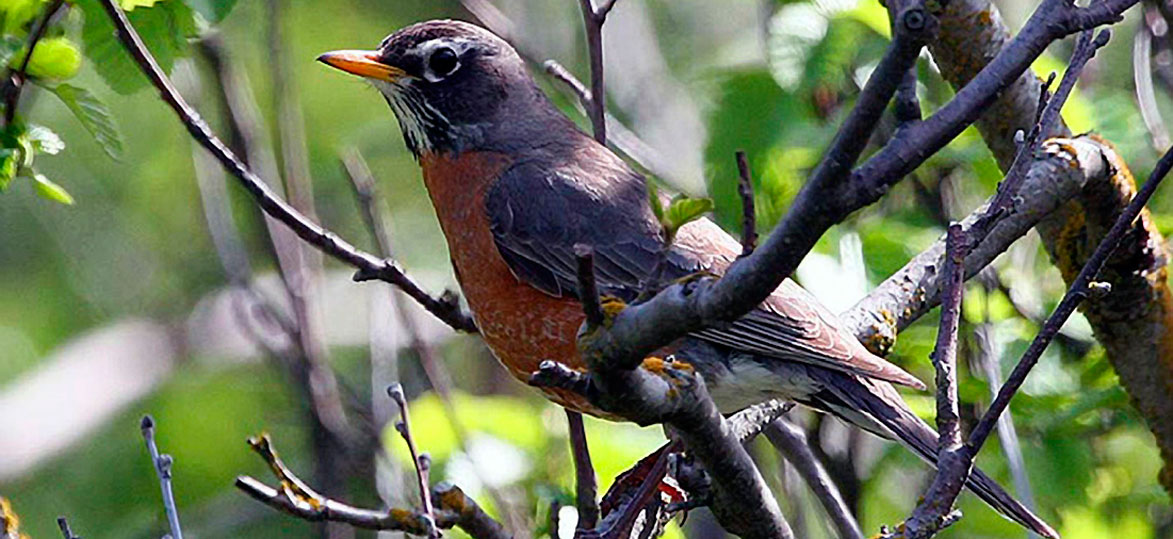
The American Robin (Turdus migratorius) is a popular bird. Its red belly makes it easy to recognize even by a novice birder. It is not shy, and is often seen nesting and feeding in towns and cities.
Habitat
Although Robins originally nested in forests, they are now found in towns and gardens as well as open woods and agricultural lands. Robins need a combination of open ground for foraging and trees and shrubs for nesting and roosting. They prefer to nest in dense conifers, but can adapt and use whatever is available, often using deciduous trees once the leaves are out.
Later in the year, they may even use fences, window ledges, or the ground as a nest site. The nest is made out of mud and twigs, and is lined with fine, soft grass. Robins often spend the winter in cedar bogs and swamps in winter states, although they are not often seen.
Robins are a migratory species and travel south for winter. They gather in large flocks during this seasonal migration at night roosts. Breeding occurs when they return. Males compete for females through vocalizations in a variety of songs.
Reproduction
Most male robins return to Vermont in March, a few days earlier than the females. Upon her arrival, the female robin may build its nest two weeks before laying eggs, which may be reused for subsequent broods.
The female lays three to four famously pale blue eggs, and incubates them for 11 to 14 days. The male helps feed the young robins until they fledge, or learn to fly, which is generally nine to 16 days after hatching. A female robin may raise several broods each summer, from May until September.
Diet
The American Robin is an omnivore, feeding on both plant and meat items. It will eat a variety of invertebrates, such as earthworms, caterpillars and beetles, but a greater percentage of its diet comes from fruits and berries. The robin generally finds its food while hunting on the ground or perching in a tree, but can catch insects flying in mid-air.
Management
There are several ways to attract robins to your yard. As 60% of their diet is composed of fruits and berries, planting a berry bush will provide them an excellent foraging opportunity. Robins also enjoy raisins, grapes, and suet, which can be offered on a platform feeder. Earthworms and other invertebrates make up part of the robins' diet as well. These can be encouraged to live in your yard by setting aside a wet area or a small brush pile.
Status
The American Robin is a widespread species, well known throughout most of the Unites States. It is a summer resident of Vermont and is abundant here from April through October. In some areas, such as the Champlain Valley, some may spend the winter, the numbers varying with food availability. The abundance of robins decreases with increases in elevation.
